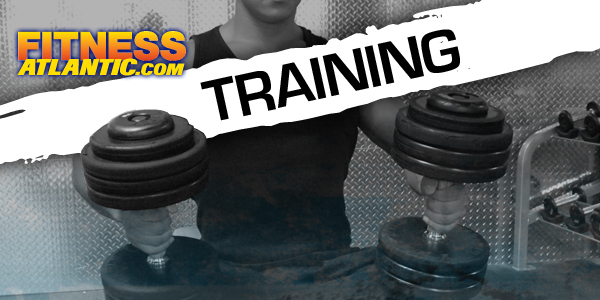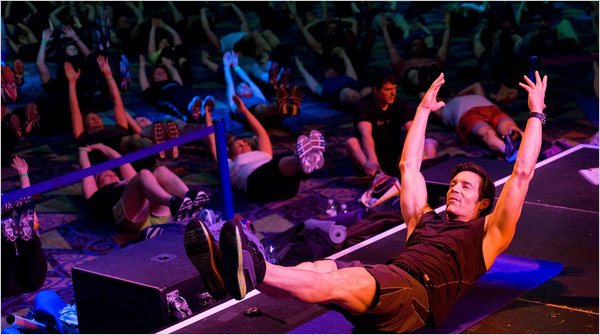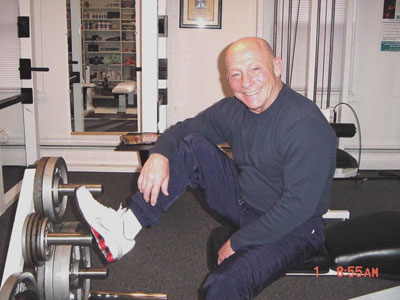 Useful facts, concepts, techniques and strategies to help you achieve your fitness goals.
Useful facts, concepts, techniques and strategies to help you achieve your fitness goals.
1. Make your goal – Fitness for Life.
You will be much more successful if you approach bodybuilding and fitness preparation not as a short-term goal (i.e. 12 weeks out), but rather as a lifestyle you inspire to maintain for the rest of your life.
2. Set specific, measurable, achievable goals
Use a training and nutrition log to record your starting point and to print periodic reports showing your progress.
– Body weight. How many pounds you weigh.
– Body composition. More important than knowing your body weight is knowing your body composition, which are your lean body mass in pounds and your body fat or fat mass as a percent of your total weight. Your lean body mass determines your basal metabolism. Your body fat percentage should be in a healthy range, as indicated on the chart below.
Body Fat Male Female
Very Low Under 11 Under 19
Low 11-14 19-22
Average 15-17 23-27
Fair 18-22 28-35
Unhealthy 22+ 35+
– Girth measurements. Measure your neck, upper arms, chest, waist, hips, thigh, and calves. Even if your weight doesn’t change maybe your proportions will.
– Cholesterol. High cholesterol is a hidden killer. You won’t know if you have a problem unless you have yourself tested. Fortunately, these day’s cholesterol screens are readily available and inexpensive. If you don’t know your cholesterol find out. It should be below 220. If it is not you’re hardly alone but you should make a serious effort to bring it down through a combination of exercise and dietary changes.-Blood pressure. Your blood pressure reading consists of two numbers (i.e. 110 over 70). The first or the top one is the systolic pressure. It measures how forcefully the heart pumps blood. When it is too high, your heart is working harder than it should. The second or bottom number is the diastolic pressure. It gauges the force of the blood flowing through fully relaxed arteries between heartbeats. A high number here could mean clogged or constricted blood vessels. A reading of 120/80 or lower is considered good. Repeated readings of 140/90 or above mean high blood pressure for which you should seek medical attention.
– Resting heart range. Your resting heart range is a reflection of your cardiac health. Usually, the lower your heart rate the healthier your heart. Exercise, proper nutrition, and avoidance of tobacco, caffeine and alcohol will reduce your heart rate. By lowering your heart rate 10 beats per minute your heart will save over 5,000,000 beats per year.
– Recovery heart rate. This is the amount of time it takes your heart to return to normal the better your cardiac health.
– Strength. Muscular strength is defined as the amount of work a muscle can do in a single maximum effort. Common measures of muscular strength include a grip test, how many push-ups you can do, and how much you can bench press a percent of your body weight.
– Endurance. Aerobic endurance is defined as the capacity of the heart-lung system to deliver sufficient oxygen for sustained energy production while performing exercises which utilize large muscle groups.
– Flexibility. Poor flexibility is associated with increased risk for lower back injury, muscle strains, and poor orthopedic injuries. A good, consistent program of stretching before and after exercise will improve your flexibility. One of the standard ways to measure flexibility is the sit and reach test.
– Forced vital capacity (FVC. This measure of your body’s respiratory health measures the volume of air you can inhale into your lungs and then exhale forcefully. It is affected by your fitness level, your age, your gender, your living environment and your smoking status. If you smoke, major improvement to your FVC will occur if you stop.
– Daily caloric expenditure. The amount of calories your body burns each day is known as your Daily Caloric Expenditure and takes into account your body type, your occupation and exercise program, and your digestive activity. This must be calculated first in order to design a meal plan consistent with your fitness goals.
3. Commit yourself for at least three months
The longest journey begins with a single step. Achieving your fitness goals is no different. Measure your progress each month and give yourself credit for the gains you have achieved.
Changes take place incrementally, but three months is long enough to make significant changes. You’ll be surprised how quickly steady incremental progress adds up. And, a series of goals met builds a track record of success, which can be very motivating.
4. Find an exercise routine you can sustain
 Consistency is key. Find an exercise routine you can make a regular part of your life, week in and week out. While four to five workouts per week with time and proper nutrition is enough to get you contest ready.
Consistency is key. Find an exercise routine you can make a regular part of your life, week in and week out. While four to five workouts per week with time and proper nutrition is enough to get you contest ready.
Don’t make a mistake of starting off with great enthusiasm and intensity, burning out after a few weeks, and then quitting. Pick an exercise routine you can sustain.
5. Follow the formula for success
The only way to lose fat and gain muscle is through the following basic formula:
1. Build muscle through strength training 2. Build heart-lung capacity through aerobic training 3. Feed your body the nutrients it needs 4. Weave good health habits into your lifestyle
6. Visualize your workout
Professional athletes use visualization and so can you. Before each workout pause to collect your thoughts. Close your eyes and visualize yourself going through your routine, think about how great you will feel when you finish, then follow through on your visualization.
7. Discuss your fitness program with your doctor
A safe and effective fitness plan can be designed around almost any medical condition that may exist.
In addition, because the leading causes of death are lifestyle-related, doctors are increasingly taking an interest in helping patients improve their lifestyle as a way to reduce their risk. You are well advised therefore to obtain regular medical check-ups especially if you are over the age of 40.
8. Start with a brief cardiovascular warm-up
 Warming up prepares your body for exercise. It helps reduce risk of injury and improves the efficiency of your workout by:
Warming up prepares your body for exercise. It helps reduce risk of injury and improves the efficiency of your workout by:
– Releasing hormones that burn fat and increase muscle strength
– Increasing flexibility for better muscle contraction
– Increasing body temperature which helps increase rate of energy production.
9. Stretch at least 4 of the major muscle groups
Many kinds of exercises have the effect of tightening the muscles. It is important to offset this by stretching at least four of the major muscle groups, namely your quadriceps (front of your leg), your hamstrings and glutes (the back of your leg and your buttocks) and your lower back and shoulders.
Proper stretching involves controlled elongation of a muscle through the full range of motion. Pointers include:
– No bouncing
– Hold each stretch for 15-30 seconds
– Perform your stretches in a circuit. Stretch the next muscle while the previous one rests. Complete your circuit 2-3 times
– Try to stretch relaxed muscles. For example, don’t stretch your hamstrings by bending over and touching the floor. Your hamstrings are trying to contract while you are trying to stretch them
– Do not apply too much pressure. When a muscle is in pain, it is being damaged. Stretching should feel good, painful stretching is self-defeating.
10. Train for muscular strength
The greatest fitness discovery in recent years is that everyone should strength train. In combination with aerobic exercise and flexibility training, strength training provides enormous fitness and wellness benefits, including:
– Strength training is crucial for people wishing to lose fat. Ten pounds of added muscle will burn around 400 additional calories a day. This by itself, everything else held constant, alone can help you lose as much as a half a pound of body fat a week.
– Strength training combined with aerobic exercise burns more fat than aerobic exercises by itself, helping you lose body fat more quickly.
– Strength training puts stress on the bones, thereby stimulating the body to increase bone density, which means that people at risk of osteoporosis can benefit from strength training.
– Strength training combined with loss of body fat will help improve posture and general body proportions making you look and feel your best.
11. Train aerobically
Aerobic exercise is any exercise where the cells metabolize fat, which requires oxygen. Low-intensity, rhythmic, continuous exercise using large muscle groups does this. Examples include running, jogging, aerobics, biking, etc. The key is getting your heart rate into your training zone for a minimum of 20 or more minutes at a time.
The longer you exercise in the heart rate training zone the more fat your body burns and the more you develop your heart-lung system and its ability to transport oxygen to the muscles, which in turn makes your body a more efficient fat burner.
Aerobic training helps you:
– Burn significant calories
– Reduce body fat by burning excess fat for fuel. The body will use fat for fuel if you remain within your target zone.
– Increase your oxygen uptake. By increasing oxygen uptake, you increase your fat burning potential. The better your oxygen uptake, the faster you can get oxygen to your cells enabling the body to make energy from body-fat and not carbohydrate.
– Lower blood pressure and cholesterol.
12. Cool down properly
Cooling down is the process of returning your heart rate and other bodily systems to their normal functioning range. Benefit include:
– Prevent lightheadedness or fainting due to rapid drop in blood pressure
– Reduce the likeliness of muscle spasm or cramping
– Reduce prolonged soreness which could cause you to skip workouts or reduce your exercise intensity
Redistribute lactic acid accumulated in the exercised muscle. Lactic acid causes the burn during exercise. It is the by-product of glucose metabolism. Proper cool-downs helps your body remove the lactic acid redistributing it to the liver, heart, and non-skeletal muscles.
13. Get adequate rest between workouts
A proper strength training workout, where you exercise to momentary failure will cause little micro tears in your muscles. This is what you feel as soreness.
It takes your body two to three days to recover. Therefore, you should rest at least two days between workouts. If you want to exercise daily, consider split body workouts.
14. Basic strength training topics
Start with the larger muscle groups and work down to the smaller ones. By pre-exhausting the larger muscle groups you will make it easier to isolate and properly exercise the smaller muscle groups. Many strength machines are designed to make it very easy to isolate muscles.
Set the load at a level you can lift 8 to 12 times. Studies have shown that this produces the fastest results. The point at which you can’t do one further repetition is called momentary muscular failure.
Line up. Adjust pads, seats, and any special adjustments so that your joints (elbows, knees, hips, etc.) line up with the pivot points or movements of arms of the equipment. This way you will get the maximum benefit possible.
Isolate the muscle group and use good form. Visualize the muscle group being exercised and keep it isolated. Do not let other muscles help out to get one last rep. This produces the best and safest results.
Rhythm. Raise the movement arm of the machines smoothly to the count of two, pause for one second, then lower it to the same count.
Breathing. Never hold your breath. Try to exhale during the contraction, inhale during the relaxation phase of the exercise.
Relax, Don’t clench your hands, grimace your face or grunt. You want your blood to go to the targeted muscle group, not to other, tensed up parts of your body.
15. Advanced strength training topics
Advance you weight appropriately. When you find you can do 12 or more repetitions of a given exercise with good form it is time to advance your weight. Choose a new weight that you can only lift 8 to 12 times with good form.
 Do pre-exercise warm-up sets. Once you have become used to a particular exercise and have established your exercise weight, start doing pre-exercise warm-ups using 50% of the weight you intend to lift. Perform 10-12 repetitions for 2 sets with a 30-second rest in between sets. This will draw blood to the muscle being exercised and will prepare that muscle to work to capacity during your main exercise set.
Do pre-exercise warm-up sets. Once you have become used to a particular exercise and have established your exercise weight, start doing pre-exercise warm-ups using 50% of the weight you intend to lift. Perform 10-12 repetitions for 2 sets with a 30-second rest in between sets. This will draw blood to the muscle being exercised and will prepare that muscle to work to capacity during your main exercise set.
16. The advantage of strength training machines
Strength training machines are designed to isolate each muscle group, and through the use of cams, pulleys, and other devices, to work that muscle group evenly through the full range of motion. This allows you to develop your strength evenly across the entire range of motion, something free weights don’t do well.
Strength training machines reduce the risk of injury because you don’t have to balance heavy weights. Strength training machines are quicker to set up. In most cases, inserting pins is all it takes to set the weight load.
17. The advantage of free weights
Free weights, specifically dumbbells and certain plate-loaded machines, allow you to work each side of the body independently. This can be helpful, if for example, you’ve had an injury or surgery and one side of your body is stronger than the other side.
During free weight exercises extra postural muscles are recruited for support. This helps develop coordination. Free weights give you more options to train and tend to be truer weight loads. Rods and pulleys can affect strength machines.
18. Heart rate training zone
The effect of exercise on your body is a function of the intensity of the exercise, which is commonly expressed in the percentage of maximum heart rate at which you are exercising.
The optimal range of exercise is generally thought to run from 60% to 90% of your maximum heart rate. At the lower end of the range you will be maximizing the training of your heart and lung system. At the upper end of the range you will be maximizing your ability to perform athletically.
There are several ways to calculate your heart rate training zone:
The simplest way is to subtract your age from 220 and multiply the resulting number by 60% to get the lower threshold and by 90% to get the upper threshold.
A more accurate method called the Karvonian Formula works as follows: Subtract your age from 220. From the resulting number subtract your resting heart rate. (This is your heart rate when you first wake up in the morning before you even get out of bed.) To get your lower heart rate training threshold multiply the resulting number by 60% and add you’re resting heart rate. To get your upper heart rate training zone threshold multiply the same number by 90% and again ad you’re resting heart rate.
You can measure your heart rate by taking your pulse for 10 seconds and multiplying the result by 6 or by taking your pulse for 15 seconds and multiplying the result by 4. Alternatively invest in a heart rate monitor (cost less tan $100) and you will have an excellent tool for measuring your heart rate during exercise.
19. Myths about exercise
It is common but misguided belief that the burn felt while exercising a muscle is a burning the fat stored next to that muscle. Not true. Exercising draws from fat stores all over the body. The burn is caused by a build-up of lactic acid, which is a by-product of the chemical reactions involved in producing muscle contractions.
It is common but misguided belief that women will get large unsightly muscles from weight training. Not true. Brief, hard workouts produce strength not excessive muscle. Women or men with oversized muscles owe their condition to genetics and bodybuilding workouts that use many sets and heavy weights.
20. Watch for signs of over-training
Over-training is a condition in which your exercise frequency, intensity, and duration are such that they can not be supported with proper nutrition and rest. The following is a useful list of signals of over-training:
-Insomnia or irritability
-Elevated morning heart rate
-Consistently elevated blood pressure
-Fatigue
-Loss of appetite
-Depression
-Decreased or loss of motivation to exercise
-Increased frequency of colds and influenza
-Increased frequency of injuries
-Prolonged post-exercise soreness more than 2 days
21. Eat 4 to 6 meals a day
When you eat your digestive system breaks down much of what you ate and releases it into your blood stream in the form of glucose or blood sugar.
As your blood sugar level rises, your body manufactures insulin, which keeps your blood sugar in a normal range by storing excess glucose in the fat cells.
Later on if you go a long time without eating your blood sugar level falls below normal and you may feel faint or cranky.
It is best to avoid such blood sugar peaks. The way to do this is to eat more meals each day.
22. Drinks a lot of water
Water suppresses the appetite naturally and helps your body metabolize stored fat.
How much is enough? The average person should drink eight 8-ounce glasses for every 25 pounds of excess weight. Overweight people should drink one additional glass for every 25 pounds of excess weight. The amount of water should also be increased if you exercise in hot or dry climates.
If possible, drink ice water, since the body uses up to 100 calories just warming the water to body temperature so it can be absorbed.
23. Get adequate fiber
Most Americans get far less than the 25 to 30 grams of dietary fiber recommended each day.
By choosing high fiber carbohydrates you can reduce the amount of calories (glucose) absorbed into the blood, but you can still get the proper nutrients. It just takes the body longer to digest foods high in dietary fiber. Plus, because the nutrients are harder to absorb from fiber, they are released more slowly providing a more stable source of nutrients.
Fiber also appears to reduce risk of colon cancer. It may also reduce the risks of cardiovascular disease because soluble fiber binds to cholesterol in the digestive tract and prevents it from being absorbed into the blood stream.
Increasing your fiber intake can have a noticeable effect on bowel movements and may cause some initial discomfort so adjust slowly.
24. Avoid highly processed foods
Food processing destroys the nutrients in a food but does not reduce their caloric content. In processed foods, and in most fat-free foods, you get exactly what you don’t want, calories without nutrients.
25. Limit your intake of alcohol
An ounce of alcohol contains 9 calories and no nutrients.
26. Limit your intake of saturated fats
Saturated are those fats that harden at room temperature. They are found in most animal products and in hydrogenated vegetable products. Saturated fats tend to raise the cholesterol level in the blood, which may lead to coronary heart disease. Diets high in unsaturated fats are believed to lower blood cholesterol. These fats are usually liquid oils of vegetable origin such as corn oil, cotten seed oil, soybean oil, sunflower oil, and safflower oils.
27. Eat more complex carbohydrates
Carbohydrates are classified as simple, complex, or starch. They all contain the same glucose energy just in different quantities and molecular arrangements.
Simple carbohydrates are sugars and fruits.
They have relatively few glucose molecules so they are easily digested.
Complex carbohydrates include processed foods like breads, pastas, and cereals. They have hundreds of glucose molecules and digest more slowly.
Starchy complex carbohydrates are food like potato, corn, and rice. They have 1,000 or more glucose molecules and thus digest the slowest.
28. The basic weight gain or loss formula
A pound of fat is roughly 3,500 calories.
A deficit of 500 calories per day will add up to about one pound of body fat lost per week.
You can create a 500-calorie per day deficit through a combination of three factors:
Burn calories through exercise. A good workout might burn 400 calories. Going from sedentary to three workouts a week would increase your consumption by 1,200 calories per week or approximately 170 calories per day.
Cut your daily intake slightly. A chocolate bar is around 200 calories. A beer is around 130 calories. A very slight adjustment in eating can reduce intake by 100 to 300 calories per day.
Raise your basal metabolism. Basal metabolism is the amount of calories your body burns to sustain itself (i.e. pump blood, breath, sit, walk, eat, sleep, etc.). This does not include the course of your exercise routine. Your basal metabolism is a function of your lean body mass (each pound of lean body mass consumes approximately 40 calories per day) and health of your cardio-respiratory system (i.e. the better shape your heart and lungs are in, the more calories you will burn). An additional five pounds of lean body mass will increase your basal metabolism approximately 200 calories per day.
29. A primer on nutrients
In order to achieve your goals your body needs a proper balance of protein, carbohydrates, fats, vitamins, minerals, and water. The proper balance for you at a particular point in time depends on your current fitness level and your fitness goals.
Protein – consists of amino acid building blocks, which build and repair muscles, tendons, red blood cells and enzymes. Protein can also be used as an energy source if carbohydrates and fats are not available. Your goal is to protect your protein sources since no other nutrient can perform the same vital functions. Good sources of protein include chicken, fish, beef, dairy products, and legumes (beans). One gram of protein yields four calories.
Carbohydrates — (i.e. sugars, starches, and fiber) provide glucose and therefore are the body’s preferred fuel source. They are found in foods such as pasta, breads, potatoes, vegetables, dairy, legumes, and fruits. Sugars and starches are 100% digestible, which means that every calorie is converted to glucose. Fiber is indigestible plant material. Since the body can’t digest fiber the glucose never enters the blood stream and can never get stored as fat. High fiber carbohydrates are only 80% digestible. The remaining 20% just pass right through your body.
Fat – as used by the body for energy during normal activities and low to moderate exercise intensity. They are found in plant and animal foods such as nuts, seeds, oils, meats, and dairy. Moderate amounts of fat are a necessity. One of the primary purposes of dietary fat is to slow the digestive system so nutrients don’t enter into the blood stream too quickly, especially carbohydrates. Fat is also responsible for healthy skin, hair, and to lubricate joints so they don’t wear. It is a myth that dietary fat becomes body fat. The same holds true for excess carbohydrates and proteins.
Vitamins — are organic compounds present in small amounts in foods and needed in small amounts by the body as regulators of metabolic functions. Vitamins do not provide energy directly but they do act as catalysts helping trigger other metabolic reactions in the body.
Minerals — are inorganic compounds, which contribute to health and growth by playing a part in a variety of metabolic processes.
Water — performs many functions within the body as lubricating joints, regulating body temperature, protecting organs and tissues from shock, transporting chemicals and nutrients into the system, and then removing unwanted by-products.
30. Eating for particular goals
The amount and combination of nutrients you eat is key to achieving your fitness goals. To decrease body fat your caloric balance needs to be in a deficit of calories, but not so much that you cannibalizes muscle tissue or slows your metabolism.

















